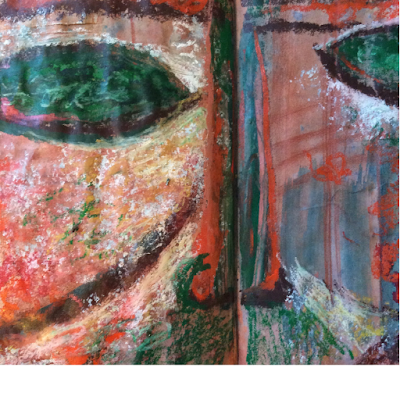Module Five – Chapter Two – Paper Relief Investigations
After collecting many kinds of paper I chose sixteen of them and scrunched them up in a first sampler. They are pasted on a squarish sheet of black paper measuring around 20 cms on each side. I have other papers in my stash but many of them give similar results when scrunched.
Sampler ONE – from top left to bottom right:
kitchen paper, heavily scrunched – tracing paper, densely scrunched – very thin drawing paper – tracing paper, loosely scrunched and partially flattened – very light Chinese writing paper – Italian hand made paper, oiled – wrapping paper – Japanese hand made paper – Thai lace paper – Vilene light – rice paper – tissue paper – heavy hand made oriental paper with fibres - kitchen paper, lightly scrunched – light oriental paper – light Japanese paper

Sampler TWO – Thai paper
My Thai paper is especially interesting for its irregularly torn edges:
Top row: small pieces torn and overlapped with fibres trailing – torn pieces densely layered – strips folded – strips spiralling downward
Middle: strips loosely gathered and overlapped
Bottom: strips in regular folds

Sampler THREE – Tracing paper
I love tracing paper for its crispness and translucency. Here is a small sampler with tracing paper irregularly torn, neatly folded, scrunched and flattened with ‘memory’ of folds left after flattening, punched and sewn without a needle

Sampler FOUR – Tissue paper
Top left: square pieces torn, overlapped and folded up at the edges – Top right: machine sewn strips – Bottom left: tissue ‘butterflies’ – Bottom right: torn strips, layered

Sampler FIVE – Strips of different papers
I particularly like the idea of torn strips overlapping and/or forming areas. In this sampler I tried different types of paper to explore their effects. An interesting experiment is ironing organic grocery bags (bottom row) to obtain holes.



Hi Daniela - there's something very satisfying about scrunching and tearing paper isn't there? especially a big mass as in your first picture. But sewing without a needle sounds hard (just teasing, I know what you meant).
ReplyDelete